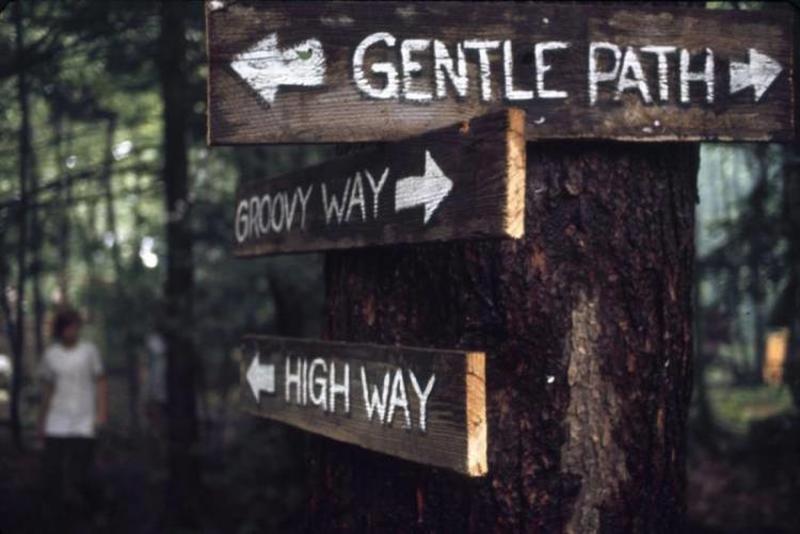
We imagine that choosing where to camp wasn't the easiest process. Half your mind is already busy trying to remember where you abandoned your car, you're surrounded by way more people than you were expected, and the site is filling up fast. You just want to get your tent set up and explore your temporary surroundings, so you're likely to just set things down in the first clear space you can find. And then you have to find it several hours later, in the dark. Possibly whilst high.
The path names laid out by the organizers didn't really help matters. Imagine the conversation. 'Do you remember where we put the tent, man?' 'I don't know, dude, I think it was on High Way. Just off Gentle Path'. 'High Way? Are you sure it wasn't Groovy Way?' 'I dunno man, it could have been Groovy Way, too. I dunno. I'm high'. Perhaps choosing street names that weren't part of everyday hippie conversation might have been a better idea.
To insure one’s house, one’s car or to underwrite a life insurance policy, that is common practice. But who would pay an insurance premium for his/her thumb, legs or smile? Stars, of course.
At the top of the ranking are the legs of Mariah Carey, worth 810 million USD: The diva became, in 2006, the Gillette brand muse for the advertising campaign «Legs of a Goddess». She then took out an insurance policy with London Lloyds to protect her legs, a decision that is far from being insignificant. Among its customers, the London insurer then included several icons of music, such as Bob Dylan or Rod Stewart.
David Beckham’s body insured for 195 million USD: European champion with Manchester United in 1999, David Beckham was in 2006 the most renowned footballer of the planet. In relation to his sporting activities, he took out an insurance cover for his legs. The huge amount paid for his insurance would reportedly exceed the 103 million USD disbursed by Real Madrid for the cover of Christiano Ronaldo in 2009. The fashion model would later extend his insurance cover to his entire body.
15 million USD in insurance for Kim Kardashian’s curves: The curves of Kim Kardashian are her number one beauty asset. The reality TV star, who is crazy about plastic surgery, has underwritten an insurance policy worth 15 million USD to protect her famous butt.
The culinary critic Egon Ronay assured his taste buds: The famous Hungarian culinary critic has insured his taste buds since 1957, for the amount of 400 000 USD. An original insurance policy which allows him to cover his sense of taste without which he will no longer be able to practice his job.